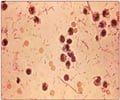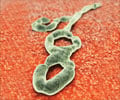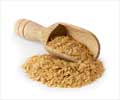- Amebiasis. - (https://www.ncbi.nlm.nih.gov/books/NBK519535/)
- Parasites - Amebiasis - Entamoeba histolytica Infection - (https://www.cdc.gov/parasites/amebiasis/index.html)
- Entamoeba Histolytica. - (https://www.ncbi.nlm.nih.gov/books/NBK557718/)
- Laboratory diagnosis of amebiasis. - (https://www.ncbi.nlm.nih.gov/pmc/articles/PMC207118/)
- Antiamoebic drugs for treating amoebic colitis. - (https://www.ncbi.nlm.nih.gov/pmc/articles/PMC6326239/)
- Tinidazole and metronidazole in the treatment of intestinal amoebiasis. - (https://pubmed.ncbi.nlm.nih.gov/340131/)
Amoebic Dysentery - Overview
It is also known as Amoebiasis or Traveller's Diarrhoea(1✔ ✔Trusted Source
Amebiasis.
Go to source).
- It is the infection of the large intestine, sometimes involving the liver. It causes diarrhoea among other symptoms.
- Frequently affects people whose hygiene is poor.
- Travellers to countries with poor sanitation are at greater risk of contracting the disease (hence known as traveller's diarrhoea).
- It can affect any one young or old of either sex.
About 10% of the world's population is infected with amoebas, particularly people who live in
- Mexico
- India
- Central America
- South America
- Africa
- Tropical areas of Asia.
In industrialized countries, amoebiasis is very common among recent immigrants and travellers who visit countries where amoebas are prevalent.
Amoebic Dysentery - Causes And Spread
The infection is caused by a parasite called "Entamoeba histolytica." (EH)
These are microscopic one-celled parasites commonly known as amoebas. Entamoeba histolytica exists as two forms in contaminated food and drink(2✔ ✔Trusted Source
Parasites - Amebiasis - Entamoeba histolytica Infection
Go to source)
- As free amoebae (known as "trophozoites")
- As infective cysts, which are a group of amoebae surrounded by a protective wall, which have been passed in the faeces of the carrier (human or animal).
As these parasites live in the large intestine, they travel in the feces of infected people, and can contaminate water supplies in places where sanitation is poor.
The parasite spreads by:
- The contamination of fruits and vegetables grown in areas where human feces are used as fertilizer.
- Dirty hands of infected people especially after bowel movement when they don't wash their hands properly.
Once amoebas enter the mouth, they travel through the digestive system and settle in the large intestine. A harmless strain of the parasite (Entamoeba dispar) can live in the intestine without causing damage.
E. Histolytica can also sometimes live in the intestine without causing symptoms, but it can cause severe disease-
- These amoebas may invade the wall of the intestine and can cause small ulcers and inflammations leading to amoebic dysentery.
- These amoebas also may pass into the bloodstream and sometimes travel to the liver and rarely, to the brain, where they can form pockets of infection leading to abscesses(3✔ ✔Trusted Source
Entamoeba Histolytica.
Go to source).
Amoebic Dysentery - Symptoms
The symptoms of amoebic dysentery's can be mild to severe depending on the location of infection. The infection can get to be life threatening in an immunocompromised individual (eg AIDS/HIV suffers) or a post transplant patient.
Mild early symptoms
- Weight loss
- Anaemia
- Indigestion
- Intermittent diarrhoea with foul-smelling stool that may be preceded by constipation.
- Dehydration
- Blood and mucus in the stool.
- Gas and Abdominal Bloating
- Abdominal cramps and tenderness
- Fever
- Fatigue
- Chills
The disease can sometimes become complicated if the amoebae break through the intestinal wall and the lining called peritoneum. This causes perforation and leads to
- Peritonitis, meaning the inflammation of the peritoneum.
The amoebae may be then carried in the blood to the liver resulting in the formation of an abscess that presents the following symptoms
- Fever
- Chills
- Pain in the upper right portion of the abdomen
- Nausea
- Vomiting
- Weight loss
- Enlarged liver
Amoebic Dysentery - Diagnosis
The best diagnosis is by demonstrating cysts or trophozoites in a stool sample.
1. Stool tests
- Three stool samples should be done in the laboratory to confirm the presence of E. histolytica(4✔ ✔Trusted Source
Laboratory diagnosis of amebiasis.
Go to source).
2. Blood tests
- There are many blood tests that can be done for diagnosis having a high degree of accuracy(4✔ ✔Trusted Source
Laboratory diagnosis of amebiasis.
Go to source).
3. Proctosigmoidoscopy or Colonoscopy
- These are special procedures done when the diagnosis is not clear after stool and blood tests.
- This involves the use of a thin, lighted instrument inserted into the rectum and colon to view them directly and tissue samples are taken for laboratory examination(4✔ ✔Trusted Source
Laboratory diagnosis of amebiasis.
Go to source).
4. Ultrasound
- If there are complications and involvement of the abdominal organs, then further investigations, such as ultrasound, may be necessary to confirm the diagnosis(4✔ ✔Trusted Source
Laboratory diagnosis of amebiasis.
Go to source).
Amoebic Dysentery - Treatment
- Involves taking antibiotic drugs to kill the parasites, the commonly used antibiotics are-
- Metranidizole(5✔ ✔Trusted Source
Antiamoebic drugs for treating amoebic colitis.
Go to source). - Tinidazole(6✔ ✔Trusted Source
Tinidazole and metronidazole in the treatment of intestinal amoebiasis.
Go to source)
- Bed rest and drinking a solution (containing salt and glucose) to replace losses from the diarrhoea and for rehydration may also be necessary.
- Painkillers and muscle relaxants are given to treat stomach or abdominal pain.
- Complicated cases may require hospitalisation.
- If dehydration is severe, intravenous fluids may be required.
- It is very important not to consume alcohol during treatment.
- After treatment, regular stool tests will be taken to ensure that the parasite is completely eradicated, as amoebiasis has a tendency to recur at intervals.
Preventions and Precautions
There is no immunization to protect against gastrointestinal amoebiasis.
- Always wash hands with soap after going to the toilet as well as before preparing and eating food.
- The best way to avoid infection with amoebic cysts is to ensure that everything eaten or drunk has been washed or sterilised properly and cooked thoroughly.
- While travelling avoid foods like-
- Salads
- Peeled fruit
- Ice cream
- Ice cubes may be made of contaminated water, hence it is best to try and avoid having drinks that contain ice in roadside hotels especially in tropical countries
- Consumption of clean and sterile drinking water.
- Water can be made safe by, by boiling it for 10 to 15 minutes, and then cooling it rapidly and keeping it covered. It is important to remember that the chemical methods of sterilisation are not a guaranteed method to completely destroy all possible harmful organisms.










